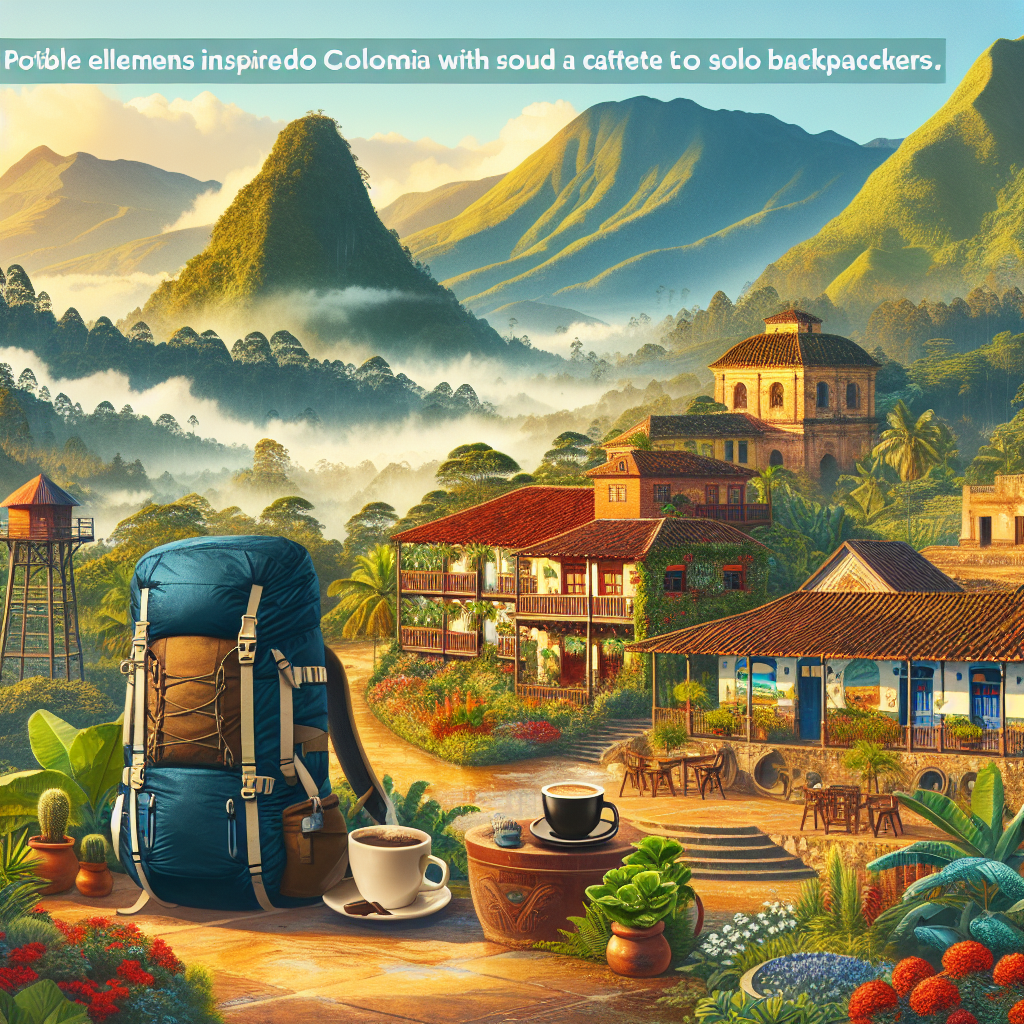Colombia’s Safety Guide for Solo Backpackers: What You Need to Know
Introduction
For many, Colombia conjures images of lush landscapes, rich coffee, and a colorful culture that dances to the rhythm of salsa. The nation has undergone a tremendous transformation, casting off its troubled past to emerge as a cherished gem for travelers seeking adventure, warmth, and a hint of the exotic. Solo backpackers, in particular, find Colombia’s diverse terrain—from the Andean mountains to Caribbean beaches—an alluring playground. However, like any adventure, it’s vital to embark with both eyes open, especially when it comes to safety. This comprehensive guide will arm you with essential tips, cultural insights, and practical advice to ensure your solo journey through Colombia is not only memorable but also secure.
Understanding Colombia’s Safety Landscape
The narrative around Colombia’s safety has dramatically shifted over the past decade. Thanks to concerted efforts by the Colombian government and local communities, the security situation has improved. However, it’s important for solo backpackers to stay informed about the areas they plan to visit. While cities like Bogotá, Medellín, and Cartagena are considerably safe for tourists, caution should still be exercised, especially at night.
Essential Safety Tips for Solo Backpackers
1. Stay Informed: Before and during your trip, keep an eye on travel advisories and news related to the regions you plan to visit. Apps and websites such as the U.S. Department of State’s travel advisories or the UK’s Foreign and Commonwealth Office offer up-to-date information.
2. Blend In: As a solo traveler, drawing less attention means you’re less likely to be targeted. Dress modestly, avoid displaying expensive gadgets, and try to adopt some local customs to blend in.
3. Learn Basic Spanish: While English is spoken in tourist areas, knowing basic Spanish can greatly enhance your experience and safety. Being able to communicate can help in negotiations, in asking for directions, and in emergencies.
4. Secure Your Belongings: Use anti-theft bags or money belts. When staying in hostels or hotels, use lockers or safes for your valuables. Be especially vigilant in crowded places and on public transport.
5. Travel Insurance: Ensure you have comprehensive travel insurance that covers medical emergencies, theft, and cancellations. Knowing you’re covered in case of an emergency can offer peace of mind.
6. Trust Your Instincts: If a situation doesn’t feel right, trust your gut and remove yourself from it. Solo travelers especially should heed their intuition.
7. Use Safe Transportation: Opt for reputable bus companies or use apps like Uber or Cabify in cities where they are available. Avoid hailing taxis on the street, especially at night.
8. Stay Connected: Keep your phone charged and with you, and share your itinerary with friends or family back home. Apps like WhatsApp are widely used in Colombia for communication.
Exploring Colombia Safely
City Safety: Major cities are vibrant and full of life but come with their own set of challenges. In places like Bogotá and Medellín, stick to well-lit, populated areas and avoid “zona rosa” late at night unless in a group.
Rural and Remote Areas: Colombia’s natural beauty is unmatched. When exploring more secluded areas like the Amazon or the Sierra Nevada, it’s wise to go with a reputable guide. Not only does this ensure safety, but it also enriches the experience with local knowledge.
The Coast: The Caribbean coast is a highlight for many. In cities like Cartagena, enjoy the beaches but be cautious with your belongings and avoid isolated areas after dark.
Emergencies and Assistance
In case of an emergency, dial 123 for immediate assistance. It’s also a good idea to have the contact information for your country’s embassy or consulate. Many embassies offer services and advice to their citizens in distress.
Cultural Considerations
Understanding and respecting local customs and laws is paramount. Colombians are warm and welcoming, and showing respect towards their culture only enhances mutual understanding. Be mindful of local etiquette, especially in rural areas, and always ask permission before taking photos of people.
Recreating the Solo Backpacking Experience in Colombia
For those inspired to follow in the footsteps of solo backpackers in Colombia, the journey starts with preparation. Learning some Spanish, familiarizing yourself with the culture, and mapping out a rough itinerary are great first steps. Remember, the beauty of solo travel lies in its flexibility—allow yourself to explore freely, but always within the bounds of safety and respect for the local community.
FAQ
Q: Is Colombia safe for solo female travelers?
A: Yes, many solo female travelers have explored Colombia without incident. However, it’s important to take all the usual precautions, such as avoiding walking alone at night and being cautious about who you trust.
Q: Can I drink the tap water in Colombia?
A: In major cities and many tourist areas, the tap water is generally considered safe to drink. However, in rural or remote areas, it’s advisable to drink bottled water.
Q: What is the best time to visit Colombia?
A: Colombia is a year-round destination, but the best weather is typically during the dry season, from December to March and July to August.
Q: How can I stay healthy while traveling in Colombia?
A: Avoid mosquito bites to protect against diseases like Zika and Dengue. Eat in clean, reputable places and stay hydrated with safe water. Consider vaccinations recommended by health professionals before your trip.
Conclusion
Colombia offers a rich tapestry of experiences for the solo backpacker willing to explore its depths. With the right precautions, an open heart, and a spirit of adventure, you’ll find that Colombia can be a remarkably safe and rewarding destination. The key is preparation, respect for local customs, and an ever-present sense of adventure. With these in your backpack, Colombia will not just be a destination, but a vibrant chapter in your journey of discovery.
